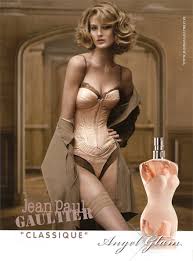Saturday 20 December 2014
Essay Question Analysis
Semiotics is known as "the science of signs" and has evolved to infiltrate all aspects of visual culture. Choose four popular cultural artifacts such as advertisements, posters, fashion campaigns, or designs, and offer an in depth semiotics analysis of their meanings via the use of sign, dialogic, symbol and index. Discuss in terms of symbolism, and/or a fragment standing for the whole.
Key elements of the question :
Semiotics
I need to show I understand this term with research and application
four popular cultural artifacts
I need to have at least FOUR artifacts eg. advertisments, fashion campaigns, designs, posters,
in depth semiotics analysis
500 words at least on each artifact, I will need to go into specific detailing
use of sign
how and why have they been used?
dialogic
(dialogue) words/slogans/song lyrics and how they affect the consumer
symbol
how/what is used? why?
index
what helps connote the message
discuss
a written debate in which i talk about two different sides and form a conclusion on the sides
terms of symbolism
what is representing the ideals and abstract entities (ie love, time, racism)
Possible Pop Culture Artefacts
Definition of artifact
4. a substance or structure not naturally present in the matter being observed but formed by artificial means, as during preparation of a microscope slide. Here
Definition of artefact
n.
1821, artefact, "anything made by human art," from Italian artefatto, from Latin arte "by skill" (ablative of ars "art;" see art (n.)) + factum "thing made," from facere "to make, do" (see factitious ). The spelling with -i- is by 1884, by influence of the Latin stem. Archaeological application dates from 1890. Here
Possible subjects:
(images courtesy of google images)
Friday 12 December 2014
On Photography (book)
In Plato's Cave
"photographs are perhaps the most mysterious of all the objects that make up, and thicken, the environment we recognize as modern"
page three
"photographed images do not seem to be statements about the world so much pieces of it, miniatures of reality that anyone can make or acquire."
page four
Chris Marker
film : Si j'avais quatre dromadaires (1966)
"images which idealize (like most fashion and animal photography) are no less agressive than work which makes a virtue of plainness (like class picture, still lifes of the bleaker sort, and mug shots)
Dziga Vertov
film : Man with a movie camera (1929)
Hitchcock
film : rear window (1954)
Michael Powell
film : peeping tom (1960)
not research
"photographs cannot create a moral position, but they can reinforce one - and can help build a nascent one. "
page 17
nascent - a new organization with future potential
" Any photograph has multiple meanings; indeed, to see something in the form of a photograph is to encounter a potential object of fascination. The ultimate wisdom of the photographic image is to say: "There is the surface. Now think - or feel, intuit - what is beyond it, what the reality must be like if it looks this way." Photographs, which cannot themselves explain anything, are inexhaustible invitations to deduction, speculation and fantasy "
page 23
" strictly speaking one never understands anything from a photograph. Of course, photographs fill in blanks in our mental pictures of the present and the past"
page 23
America, Seen Through Photographs, Darkly
" In the normal rhetoric of the photographic portrait, facing the camera signifies solemnity, frankness, the disclosure of the subjects essence. That is why frontality seems right for ceremonial pictures (like weddings, graduations) but less apt for photographs used on billboards to advertise political candidates (For politicians the three-quarter gaze is more common: a gaze that soars rather than confronts, suggesting instead of the relation to viewer, to the present, the more ennobling abstract relation to the future.) "
page 37 / 38
The Heroism of Vision
" People want the idealized image: a photograph of themselves looking their best. "
page 85
"The news that the camera could lie made getting photographed much more popular "
page 86
" the daguerrotype portrait that "while we give it credit only for depicting the merest surface, it actually brings out the secret character with a truth that no painter would ever venture upon, even could he detect it."
page 87
" Thus, while fashion photography is based on the fact that something can be more beautiful in a photograph than in real life; it is not surprising that some photographers who serve fashion as also drawn to the non-photogenic. "
page 104
"The traditional function of the portrait painting, to embellish or idealize the subject, remains the aim of everyday and of commercial photography, but it is has a much more limited career in photography considered as an art "
page 105
"photography has served to enlarge vastly our notion of what is aesthetically pleasing"
page 105
Photographic Evangels
"photographic realism can be - is more and more - defined not as what is "really" there but as what I "really" perceive. "
page 120
Friday 5 December 2014
Elements of Semiology (internet source)
https://www.marxists.org/reference/subject/philosophy/works/fr/barthes.htm
date first visited : 5th of Dec at 23:29
author of the extract : Roland Barthes in 1964
date first visited : 5th of Dec at 23:29
author of the extract : Roland Barthes in 1964
Introducing Semiotics (book)
"natural signs" (freely occurring throughout nature)
"conventional" signs (those designed precisely for the purpose of communication)
page 5
teachings of St. Augustine (354-440)
William of Ockham (c. 1285 - 1349)
John Locke (1632-1704) Essay Concerning Human Understanding (1690)
page 6 / 7
Ferdinand de Saussure (1857-1913)
published a paper : "Primitive System of Vowels in Indo-European Languages"
his students started the course "Cours de linguistique generale."
diachronic - linguistics which looks at the changes which take place over time in specific languages
synchronic "the state of language in general, an understanding of the conditions for existence of any language"
page 9
"Saussure defined the linguistic sign as a two-sided entity, a dyad. One side of the sign was what he called the signifier. A signifier is the thoroughly material aspect of a sign"
"Saussure described the verbal signifier as a sound image"
page 10
"inseparable from the signifier in any sign - and, indeed, engendered by the signifier - is what Saussure calls the signified"
page 11
(my notes : the signifier is the material used with the codes in it and the signified is the person receiving the codes who has the mental reaction)
Charles Sanders Peirce (1839-1914)
paper "On a New List of Categories" 1867
"a triadic theory of the sign"
insert pic from phone (page 21)
"firstness, secondness and thirdness"
page 27
Roland Barthes
1915-80 he wrote essays in a French mag.
Les Lettres nouvelles
" set out to expose a "mythology of the month" , largely by showing how the denotations in signs of popular culture betray the connotation which are themselves "myths" generated by the larger sign system that makes up society. "
published book called Mythologies in 1957
published essay The Rhetoric of the image in 1964
A linguistic message - all the words
a "coded iconic"message - the connotations in the photograph
a non-coded iconic" message - the denotations in the photograph
page 47
Charles Morris
"Foundation of the Theory of Signs" 1938
Thursday 4 December 2014
Semiotics The Basics (book)
Semiotics : the basics
2nd edition
Daniel Chandler
Routledge Taylor and Francis Group London and New York
first published in 2007
2nd edition published on 2007
Subscribe to:
Posts (Atom)





